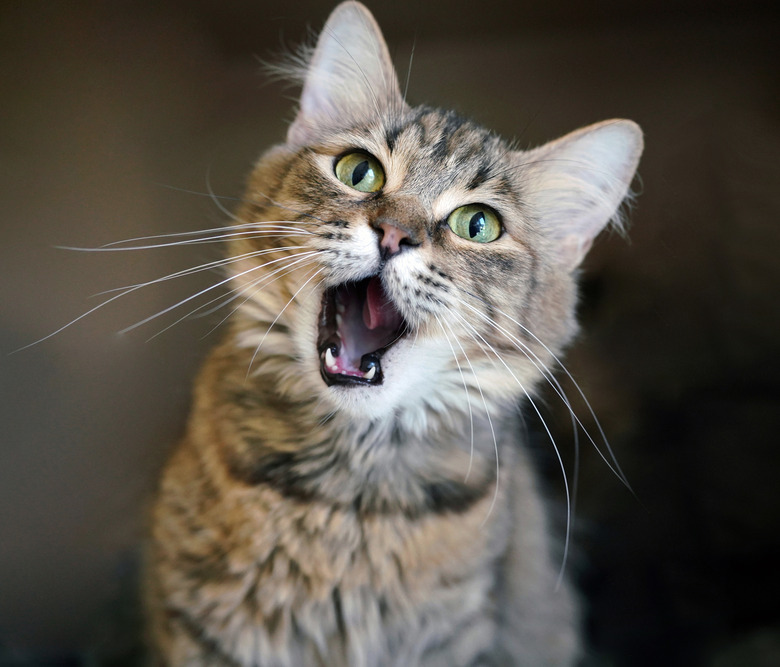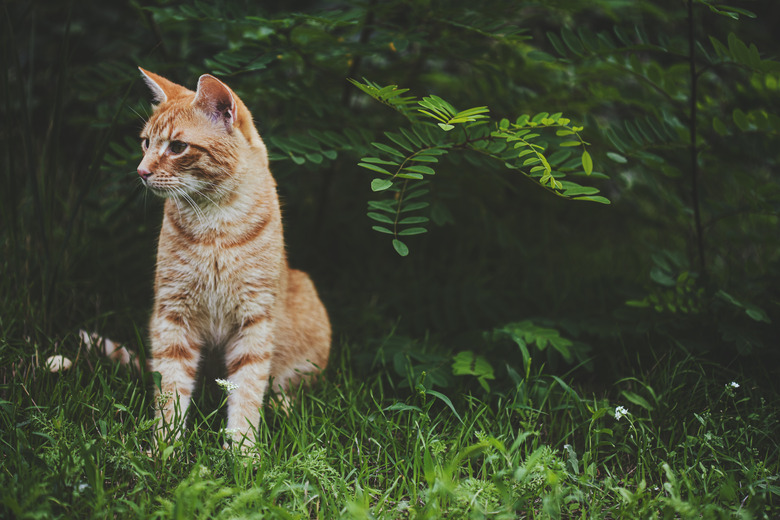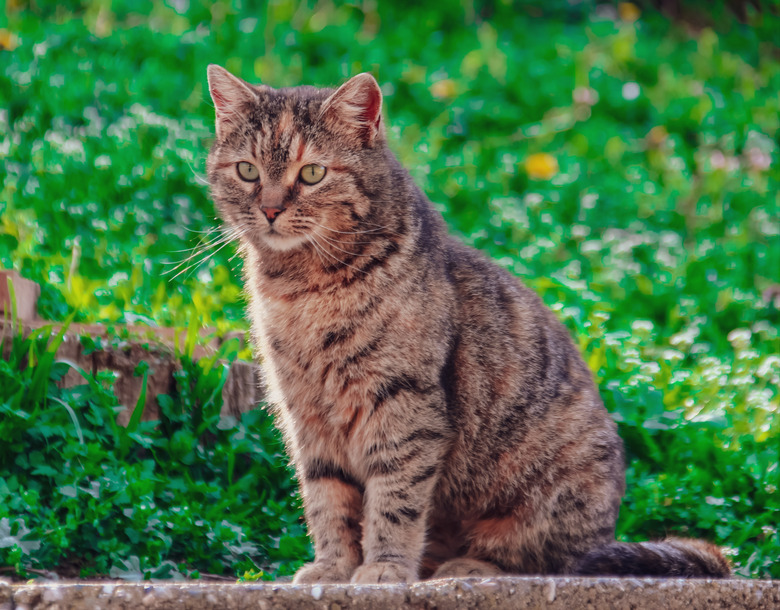Brown Eye Discharge In Cats: Causes, Symptoms & Treatments Of Epiphora
Brown Eye Discharge in Cats?
One day, you look at your cat's usually clean face and see a rusty brown eye discharge, almost as if they had been crying. We spoke with Dr. Shagufta Mulla, a veterinarian with a DVM degree from Colorado State University with 20 years of experience as a small animal veterinarian, to find out more. If you have a white cat or one with a light-color coat, these so-called cat "eye boogers" may be especially apparent and unsightly. Dr. Mulla told us that, generally, eye discharge can be wiped away and isn't serious, but it could indicate a condition like conjunctivitis, tear duct blockage, corneal ulcers, or an anatomical abnormality.
Cats’ eyes can produce excess tears
Cats' eyes can produce excess tears
The eye discharge you're observing is usually caused by excess tear production. The brown staining means that your cat's tear ducts aren't draining properly or the eyes are making excess tears. The thin layer of tears on the surface of your cat's eyes lubricate them and prevent dryness. As in humans, their tears flow into tear ducts located at the corners of the eyes near the nose.
Causes of eye discharge and excess tears in cats
Causes of eye discharge and excess tears in cats
"A normal pigment called porphyrin is found in animal tears," says Dr. Mulla. "The pigment contains iron, which contributes to the color." Epiphora is the clinical term for excessive lacrimation, or an overflow of tears from a cat's eye onto the face. Excessive tear production isn't always associated with brown eye discharge, known as porphyrin staining, nor is it always a sign of an underlying condition. Brown discharge typically accompanies chronic excess tear production. "Epiphora is just excessive lacrimation, meaning tearing or overflow of tears onto the face," says Dr. Mulla. "And epiphora is not always associated with the brown discharge, which we call porphyrin staining, For example, simple irritation can cause temporary epiphora but no brown discharge. With chronic epiphora, you're more likely to see the brown coloring."
Chronic epiphora might indicate an eye condition or result from breed-specific anatomy. When tear ducts become blocked, the tears track down the face. This is most common in cats with flat faces, like Persians and Himalayans. "In these breeds with squished-in faces and shallow eye sockets with protruding eyes, the tears fall right past the tear ducts and onto their face," explains Dr. Mulla. These cats' long fur can also obstruct the tear ducts.
Infection of cat eye membranes
Infection of cat eye membranes
A number of eye conditions can cause excess tears. They may also cause an eye discharge that is usually clear or yellowish. Conjunctivitis (what we call "pink eye" in humans) is one of the most common causes of tear duct blockage. This type of eye infection affects the conjunctiva, which is the lining inside of the eyelids. Other eye problems that might cause blocked tear ducts and eye discharge include injuries, glaucoma, or ulcers on the cornea. Another underlying cause could be chronic allergies, which can cause swelling adjacent to the tear duct and compress it.
Even eyelashes can cause excess tearing and eye discharge, especially in conditions where they grow abnormally from the inside edge of the eyelid and irritate the eye. A cat's eyes may not be formed properly due to anatomical abnormalities. Entropion, for example, is a genetic condition in which part of the eyelid is folded toward the cat's eye. Some cats may have blocked tear ducts due to debris obstructing the openings or if for some reason the tear ducts failed to open as they were developing in the womb.
Diagnosing the cause of excess tears in cats
Diagnosing the cause of excess tears in cats
In addition to the brown eye discharge, you might notice that your cat's face seems wet most of the time. If an eye infection is causing the excess tears, there may be an odor, and the constant presence of tears may cause skin irritation or infection. Your veterinarian will first thoroughly examine your cat's eyes to determine if a disease or abnormality is causing the excessive tear production. They may also check for an upper respiratory infection, which can cause eye discharge.
"If the veterinarian finds that an underlying eye condition or other disease is causing the discharge, they will treat it," says Dr. Mulla. "Your veterinarian may take X-rays or do rhinoscopy to look for tumors in the nose or sinuses. Magnetic resonance imaging or a computed tomography scan can also help detect abnormalities."
Treating eye discharge and excess tears in cats
Treating eye discharge and excess tears in cats
If the tear ducts are blocked, your veterinarian will likely use anesthesia so they can safely examine your cat's eyes. An instrument will be inserted into the tear ducts to dislodge and flush out whatever is blocking them. Sometimes, allergies and even chronic eye infections, like conjunctivitis, narrow the already-small tear ducts. This flushing can help widen them so tears more easily drain from the cat's eyes.
In some cases, a veterinarian might prescribe special eye drops to treat conditions like conjunctivitis. These are usually only indicated if bacteria are thought to have caused the eye infection.
Depending on the cause, the brown eye discharge may be a permanent condition. However, you can take some steps to lessen facial staining. Some pet parents have had success with adding parsley flakes to their cat's food. Ask your DVM about various over-the-counter wipes that may help make the staining around your cat's eyes less noticeable.
Veterinarians used to prescribe low doses of antibiotics, like doxycycline, tylosin, tetracycline, or metronidazole, which helped prevent excess tearing. However, due to antibiotic resistance, long-term use of antibiotics is now discouraged.
The bottom line
The bottom line
Excessive tears and eye discharge can be unattractive and even alarming, but it is not always indicative of an underlying condition. Pet owners should know that certain breeds, such as Persians and Himalayans, are predisposed to runny eyes because of their distinct anatomy, and allergies or irritation may cause a cat's eyes to temporarily produce excess tears. However, chronic excess tear production, especially when accompanied by eye discharge, might signal an eye infection or another condition that requires medical attention. If you are concerned about your cat's eyes, see your veterinarian for diagnostic testing and treatment.


